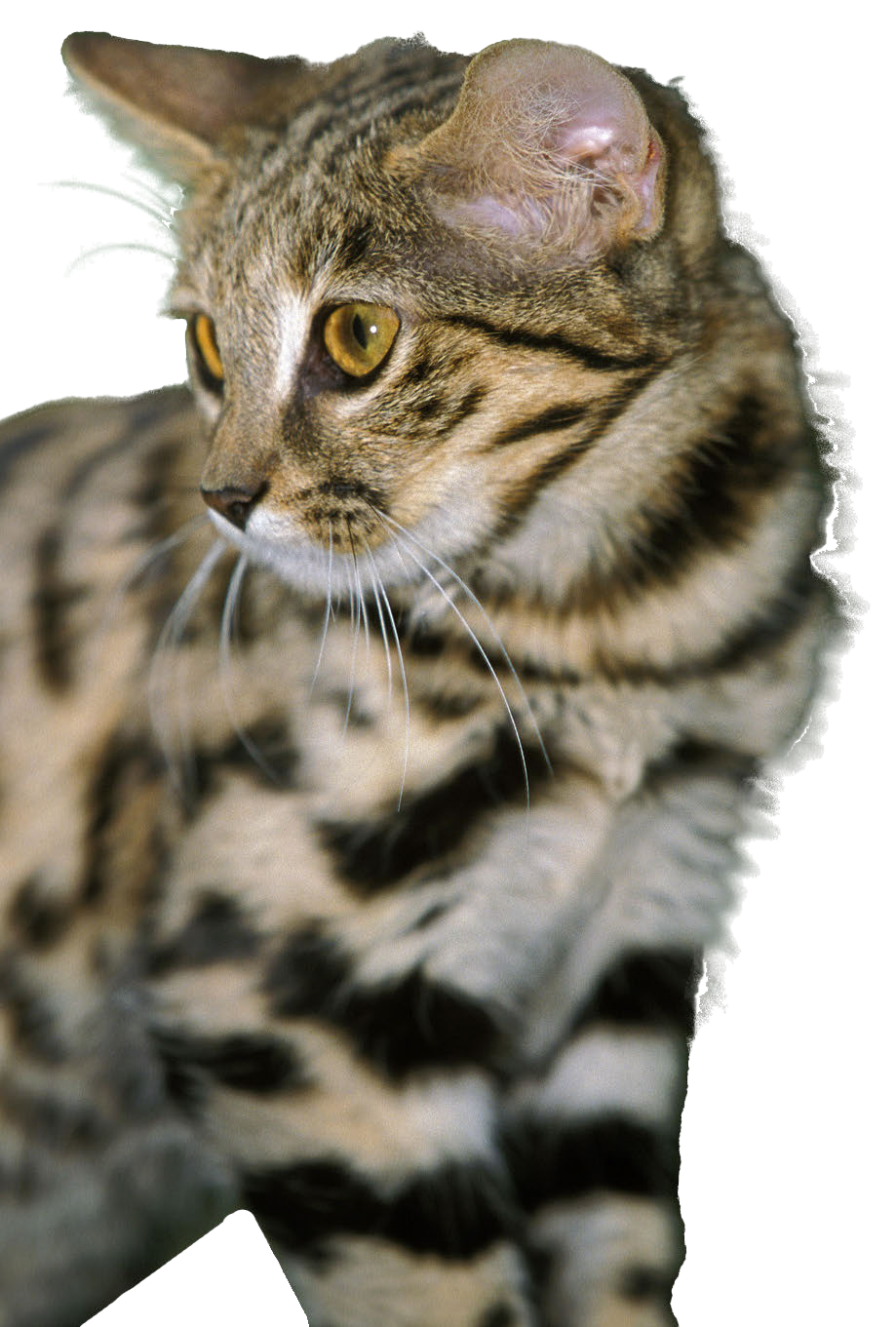The black-footed cat (BFC) (Felis nigripes) is globally and nationally listed as ‘vulnerable’ (Sliwa, et al., 2016; Wilson, et al., 2016). It is one of Africa’s three endemic feline species and the only endemic Felis specie with a highly restricted range in southern Africa (Wilson, 2015; Wilson, et al., 2016). BFCs are the smallest of the African cat species, with South Africa hosting the largest proportion of the geographical distribution (Smithers, 1983; Wilson, 2015).
Initially, the BFC was poorly studied, with few publications and a basic map of its geographical distribution. Recent studies by various authors have provided better insight into the geographical distribution, habitat preferences, population sizes and threats to the species.
It has become evident that the BFC is susceptible to various diseases, including testing seropositive for canine distemper, the feline calici virus and the West Nile virus. In captivity, the BFC develops respiratory diseases; is susceptible to toxoplasmosis, and shows a high prevalence of AA-amyloidosis. The presence of amyloid in a free-ranging BFC was also detected (Terio, et al., 2008).
There has been no comprehensive genetic study of BFCs to date and studies are limited to a small area in the Northern Cape (Silva, pers. com). The wild BFC populations tested by the Black-footed Cat Working Group (BFCWG) indicated that little inbreeding appeared to have taken place (Wilson, 2015)




